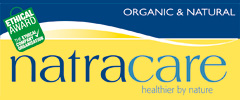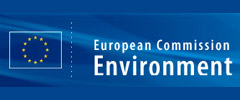Skin Deep: A Simple Smooch or a Toxic Smack?
Article in The New York Times
29.05.2009 |Abby Ellin
The New York Times, 27 may 2009 - The debate seems to resurface every few years. Do some lipsticks contain lead? If so, is the amount so negligible that consumers have nothing to be concerned about? Or will all those years of applying lipstick several times a day add up to a worrisome accumulation of a dangerous substance?
On one side are advocacy groups and doctors who insist that, over time, those who wear lipstick containing lead are at risk of absorbing high levels of a neurotoxin that may cause behavioral, learning and other problems. On the other side are the Food and Drug Administration and outside experts who say that any traces of lead that do exist are too minute to cause harm.
In February, the debate reared its head again when the Campaign for Safe Cosmetics, a coalition of health and environmental groups, issued a plea to the F.D.A. to release information the agency had accumulated on the amount of lead in lipstick. The study was conducted in response to an independent analysis in 2007, paid for by the safe cosmetics group, which found that one-third of 33 lipsticks had lead in excess of 0.1 parts per million, the federal limit for candy.
Among the worst offenders were L’Oreal Colour Riche “True Red” lipstick (with a lead content of 0.65 parts per million) and Cover Girl’s Incredifull Lipcolor “Maximum Red” (0.56 p.p.m.). Price had nothing to do with lead levels: less expensive brands, like a $1.99 tube of Wet and Wild Mega Colors “Cherry Blossom,” contained no lead, whereas a $24 tube of Dior Addict “Positive Red” contained 0.21 p.p.m.
In response to the study, L’Oreal said: “Each and every ingredient used in our products has been thoroughly reviewed and tested by our internal safety team made up of toxicologists, clinicians, pharmacists and physicians.” Parfums Christian Dior, which said it no longer makes the Positive Red shade, said, “we are confident that our products meet the highest standards and are entirely safe to be used by consumers every day.”
Cover Girl said, “Our perspective is that our cosmetics products meet the rigorous safety standards set by the U.S. F.D.A. and are safe.”
Stacy Malkan, a founder of the Campaign for Safe Cosmetics, said that lead is often present in the pigment of the reddest lipsticks. The campaign urged manufacturers to reformulate their products and called for the F.D.A. to set a safety standard for lead in lipstick. Last November, Senators John Kerry, Barbara Boxer and Dianne Feinstein asked the F.D.A. to do the same.
“The F.D.A. now says they are waiting for a peer-reviewed journal to publish their study of lead in lipstick,” Ms. Malkan said. “That could take years.”
Stephanie Kwisnek, a spokeswoman for the F.D.A., said, “Since the report was released in 2007, we have been telling the public that the levels of lead we are finding in lipstick are consistent with what we would expect to find under good manufacturing practices.”
Amid the debate, some are urging balance.
“These things sound terribly scary, but there’s a massive disconnect between how toxicologists evaluate risks and how activist groups evaluate risk, and even then there are debates,” said Trevor Butterworth, the editor of stats.org, the Web site of Stats, a nonprofit research center affiliated with George Mason University’s Center for Health and Risk Communication.
In March, Stats asked 937 members of the Society of Toxicology if cosmetics were a “significant source of chemical health risk.” Sixty-six percent disagreed, 26 percent agreed and 8 percent said they “didn’t know.”
In October 2008, a federal judge for the Northern District of Illinois dismissed a case against L’Oreal USA by a woman who is said to have purchased lipstick allegedly tainted with high quantities of lead. The judge, Robert W. Gettleman, said that the plaintiff had not shown any actual harm resulting from her use of the lipstick.
In fact, there are no F.D.A. standards limiting lead and other toxins in lipstick. The agency leaves it up to manufacturers to decide which safety and efficacy tests to perform on products. Cosmetics companies are required to list their “intended” ingredients on labels. But lead would be considered an “unintended” byproduct of the manufacturing process. (To combat this, the Environmental Working Group, a nonprofit research and advocacy organization, has a consumer database at www.cosmeticdatabase.com where it lists the ingredients in more than 42,000 products.)
When asked if consumers should be worried about lead in lipstick, several doctors, including Dr. Sean Palfrey, a professor of pediatrics and public health at Boston University and the medical director of the Boston Lead Poisoning Prevention Program, said there may be reason for concern. “Yes, these are small amounts and if you licked your lips once you probably would not cause damage — at least not to adults,” he said, adding, “Lead is a substance that builds up in the body over time, so small amounts applied daily can add up and stay in our bodies.”
Dr. David Bellinger, a researcher at Harvard Medical School and the Harvard School of Public Health who has conducted studies on the health risks of very low lead exposures, agreed that “no level of lead exposure appears to be ‘safe.’ ”
But others are less concerned.
“Questions are raised whenever there are heavy metals, but lead hasn’t been linked to breast cancer, colon cancer or other cancers,” said Dr. Therese Bevers, the medical director of the Cancer Prevention Center at the MD Anderson Cancer Center in Houston.
John Bailey, the chief scientist for the Personal Care Products Council, a trade group representing the cosmetics and personal-care products industry, said of the Campaign for Safe Cosmetics study, released in 2007, “The initial reports were presented in a very alarming way to make people think there was something wrong, but after more deliberate assessments by a number of different bodies, the facts remain that the levels of lead found are not of concern.”
Ms. Kwisnek, of the F.D.A., said that similar reports came out about lead in lipstick in the early 1990s, but subsequent F.D.A. evaluation “did not detect levels of lead that would be considered harmful.” She added: “The levels found did not exceed trace amounts that would be unavoidable even under conditions of good manufacturing practice, given background levels in the environment.”
STILL, some consumers are cautious.
“There’s lead in lipstick, and you put in on your lips, on your mouth and you can eat it,” said Danielle Carro, a director at an organic marketing company in New York.
Organic personal-care products sales reached about $443 million in 2008, a 19 percent jump over 2007, according to the Organic Trade Association, an industry group. And in September, Teens Turning Green, a national group promoting a healthier lifestyle, began a “Lips Against Lead” campaign to ban lead in lipstick.
“I just picture a little room where the industry men are saying ‘get the cheapest junk you can and put it in the box,’ ” said Judi Shils, the executive director of the group. “I think consumers are in such a good place right now because everybody is paying attention and consumers are demanding their right to health, as they should.”
By Abby Ellin, New York Times
http://www.nytimes.com/2009/05/28/fashion/28skin.html?_r=1&ref=fashion
Related News
Calling for periods free from plastic & hazardous chemicals
Letter to Frédérique Ries, MEP, European Parliament on behalf of the #BreakFreeFromPlastics movement
04.09.2018
Policy Dialogue On Sustainable Development, Health and Social justice in Tirana, Albania
Linking the Ostrava Declaration of the European Environment and Health Process to SDGs Agenda 2030
10.03.2018
WECF participated at WASH symposium in Uganda
From June 20th-23rd, a WASH symposium was held in Kampala, Uganda. WECF participated in cooperation with our local partner organization ARUWE and we presented our water, sanitation and energy projects in Uganda.
23.06.2016
We've made it - overwhelming success of our crowdfunding campaign!
In the last 4 weeks we run a crowdfunding campaign to collect 4.000€ to finance 15 Biogas Toilets for deprived families in Uganda. Thanks to your great support we can now build even more!
22.06.2016






































